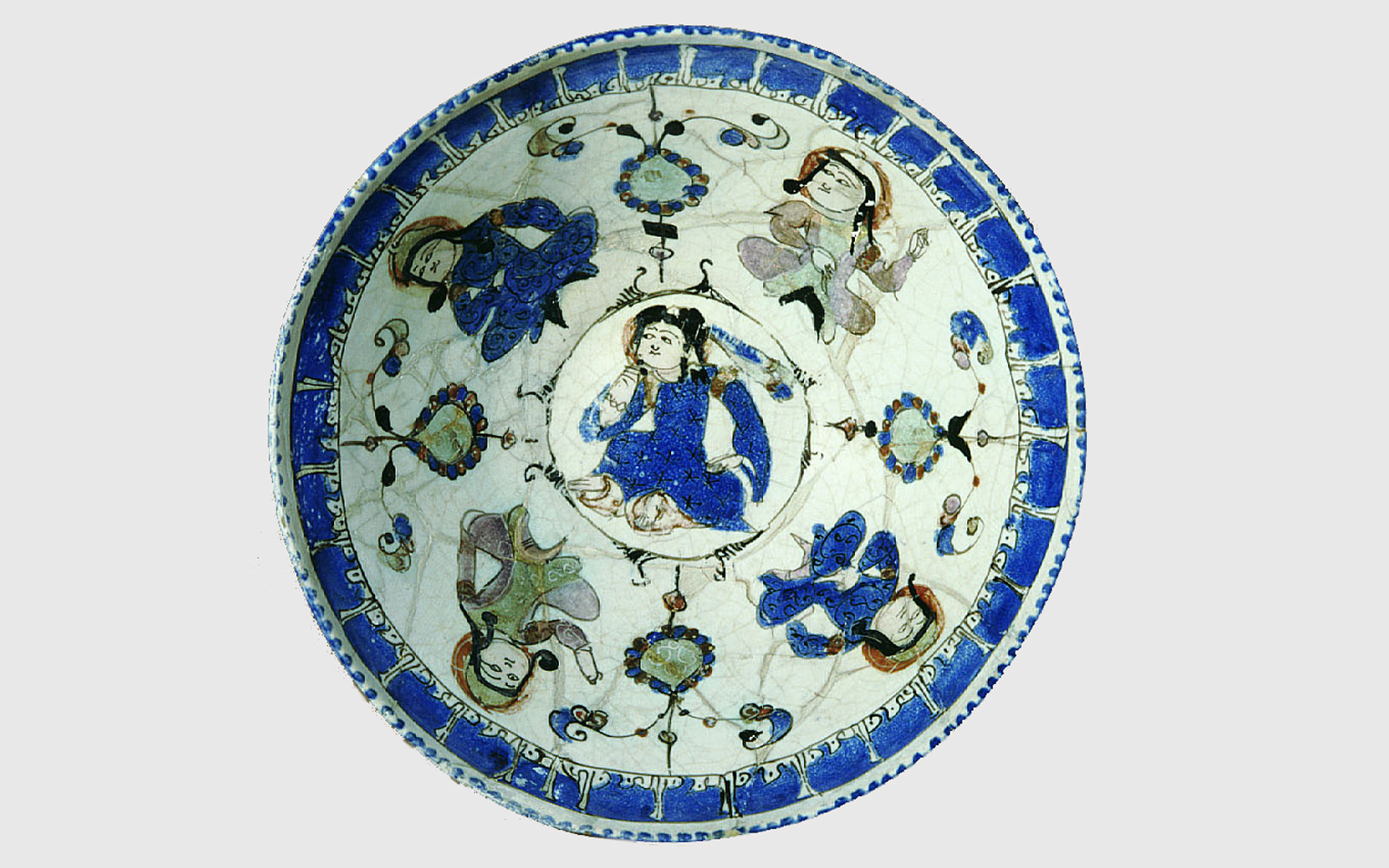‘Minai’ footed bowl

Ceramic production in Seljuk Persia was effectively concentrated around two major poles, which were also two of the most important urban centres of the late 12th and early 13th centuries: Kashan and Ray, capital of the Seljuks (who reigned in Persia between 1038 and 1184). These two cities were responsible for the majority of the production of luxury ceramics, including minai ware and lustreware.
Ceramic production in Persia burgeoned in the 11th century, inheriting a tradition of luxury objects rooted in the Islamic world dating back to the 9th century, which had been developed significantly in Fatimid Egypt. The peak of Iranian ceramics in the early 13th century might also be explained by the migration of Egyptian ceramicists at the time of the decline of that dynasty, between the late 11th and early 12th centuries.
What we know for certain is that one of the great points of reference for ceramic production in Persia, as well as in a large part of the Islamic world, continued to be Chinese ceramics – with its fine porcelain and decoration recognisable for its blue drawings and white backgrounds – imported via the ports of Yemen and transported through the Arabian Peninsula to the Mediterranean basin, Persia and Central Asia.
The technical development that allowed for painting under and over the matt glaze contributed greatly to the success of minai – or enamelled – ceramics, where each piece was a precious decorative object. Pieces underwent a complex process of firing, the first time at higher temperatures and a second time at a temperature below 600 degrees, to allow for the fixing of the most fragile pigments, including gold.
The piece in question, decorated predominantly in blue and white, but also containing pigments of green and black manganese and flecks of gold, shows, in the centre, a sitting figure, who seems to be listening to a story being told (most likely representing the person who commissioned the piece), surrounded by four figures, also seated, probably two storytellers – these figures are depicted differently in green and black, adopting a more active, staged posture – and another two listeners – in blue, like the central figure, and in a more contemplative pose. Drawn among the figures are decorative palms, arranged radially.
The inner rim shows a pseudo-inscription in characters, in white over a band of blue background, at a time when calligraphy held increasingly significant decorative value in Islamic art.

On the outer rim, an inscription in nashki characters reproduces a poem by the famous poet Motanabbi, who died in the year 968 A. D. This was not unusual in Persian iconography of the 13th-15th centuries, which often depicted poems and heroic themes in ceramics and illuminations:
On the day of separation such was my anguish that fear turned my body old and decrepit. And the distance forged a separation between my eyes and gentle sleep. My soul reigns in a body that has become slim as a reed. If a breeze were to pass through my clothing there would be nothing to discover – to describe my gauntness suffice it to say that you would not find me if I were to put up no resistance.
Jorge Rodrigues
Curator at the Calouste Gulbenkian Museum